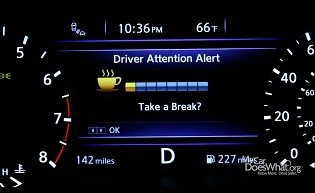 Feelings of fatigue are somewhat subjective, and signs of fatigue are not always easy to identify. Some people cannot even tell when they are fatigued.
Feelings of fatigue are somewhat subjective, and signs of fatigue are not always easy to identify. Some people cannot even tell when they are fatigued.
The reality is, more than 1 in 3 people are not getting enough sleep. To avoid fatigue, make sure to:
- Get enough sleep and provide for adequate rest between physically or cognitively demanding activities
- Talk to your doctor about getting screened for sleeping disorders, such as obstructive sleep apnea
- Align your natural body clock with your work schedule; some people who regularly fly through different time zones, for example, use melatonin to reset their circadian rhythms
- If you work the night shift, try to maintain a consistent sleep schedule even on your days off, and be sure to use blackout curtains to keep your bedroom dark
- Instead of tossing and turning, give this sleep habits assessment tool a try and find out what’s keeping you awake; your answer is likely to differ greatly from your colleague or neighbor
What States are Doing About Drowsy Driving
 One drowsy driver can impact the safety of hundreds of other drivers on the road. In an August 2016 report, Wake Up Call! Understanding Drowsy Driving and What States Can Do, the Governors Highway Safety Association presents drowsy driving countermeasures, including:
One drowsy driver can impact the safety of hundreds of other drivers on the road. In an August 2016 report, Wake Up Call! Understanding Drowsy Driving and What States Can Do, the Governors Highway Safety Association presents drowsy driving countermeasures, including:
- Public awareness campaigns
- Collecting data and increasing enforcement
- Increasing engineering solutions like rumble strips and vehicle technology
- Educating the public on vehicle technologies that can reduce crashes due to drowsy driving; MyCarDoesWhat, a National Safety Council program
- Placing greater emphasis on drowsy driving laws, teen driver policies and workplace policies
- Duplicating state best-practice methods, such as Message Mondays in Iowa and the Our Driving Concern employer traffic safety program in Texas
 Feelings of fatigue are somewhat subjective, and signs of fatigue are not always easy to identify. Some people cannot even tell when they are fatigued.
Feelings of fatigue are somewhat subjective, and signs of fatigue are not always easy to identify. Some people cannot even tell when they are fatigued. One drowsy driver can impact the safety of hundreds of other drivers on the road. In an August 2016 report, Wake Up Call! Understanding Drowsy Driving and What States Can Do, the Governors Highway Safety Association presents drowsy driving countermeasures, including:
One drowsy driver can impact the safety of hundreds of other drivers on the road. In an August 2016 report, Wake Up Call! Understanding Drowsy Driving and What States Can Do, the Governors Highway Safety Association presents drowsy driving countermeasures, including:
